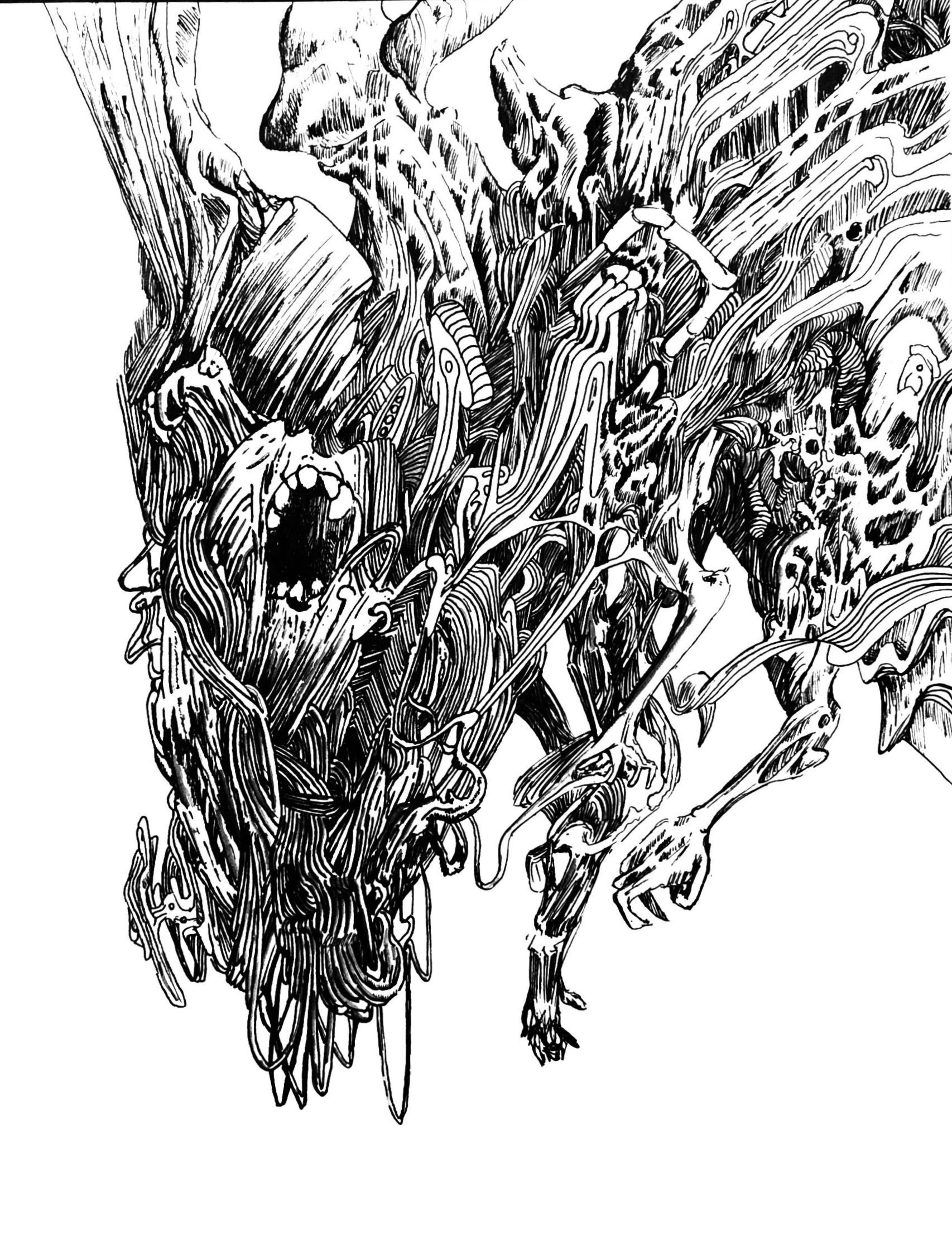Undergraduate Student, The University of Akron
Painting and Drawing
Title of Exhibition: The Nature of Conflict: 2020

One of the few universal constants is conflict. My work, created with ink and acrylic mediums, strives to embody this never-ending war. I am interested in how people quickly recognize the negative aspects of conflict while failing to realize the necessity for this constant state of war we find ourselves in. My research begins as a series of biological observations; the lion that eats the gazelle, the white blood cell that consumes the virus, the fire that scorches the dry brush, and the decay that consumes all. While a lion eating a gazelle is undoubtedly violent, it is crucial to the survival of both species, creating a natural balance. This consumption is integral; if you think of the gazelle as energy you can see that without the lion to harness and transfer that energy there would be an excessive amount creating chaos in the biological system.
This biological phenomenon is a mirror image of the conflict within human society. If we look at

the current state of American politics for example you will see a war between two major sides. Republicans and Democrats see themselves as two different populations of the same America, but many fail to see that they are each two sides of the same coin. Both sides are motivated to make a better world to live in, but the conflict lies with how to go about doing so. I won’t deny that this constant battle can be disruptive to the order of things, but imagine if the two sides did not conflict. A world where there is one side and that dominant side always wins. In this case it is now apparent that conflicts, diseases, political outrages, wars, tortures and everything that goes on in human life — are a state of conflict which can be seen in a larger perspective as a situation of harmony; a necessity to keep the order.

My drawings take the form of abstracted figures in a setting of chaotic moving parts and scenes.
The characters are conflicting with each other as much as the setting is conflicting with itself. Pieces seem to generate and bend in bizarre angles fusing together to form hybrid like organisms and
mechanisms. The Terrible Dogfish, named after the sea monster in Carlo Collodi’s 1883 book The Adventures of Pinocchio, is a drawing on canvas that displays my take on the whaling industry. A great “beast” is harpooned and butchered in the drawing to show the violence of the act, but also the necessity for the jobs and resources that are provided because of it. To Cross The Rubicon shows a great battle between two kings and how the common people face the consequences as a result. All things come at a cost and we must decide if the ends justify the means.

Final Studies are in partnership with The University of Akron and are made possible with support from Fifth Third Bank and the Robert O. and Annamae Orr Family Foundation.

